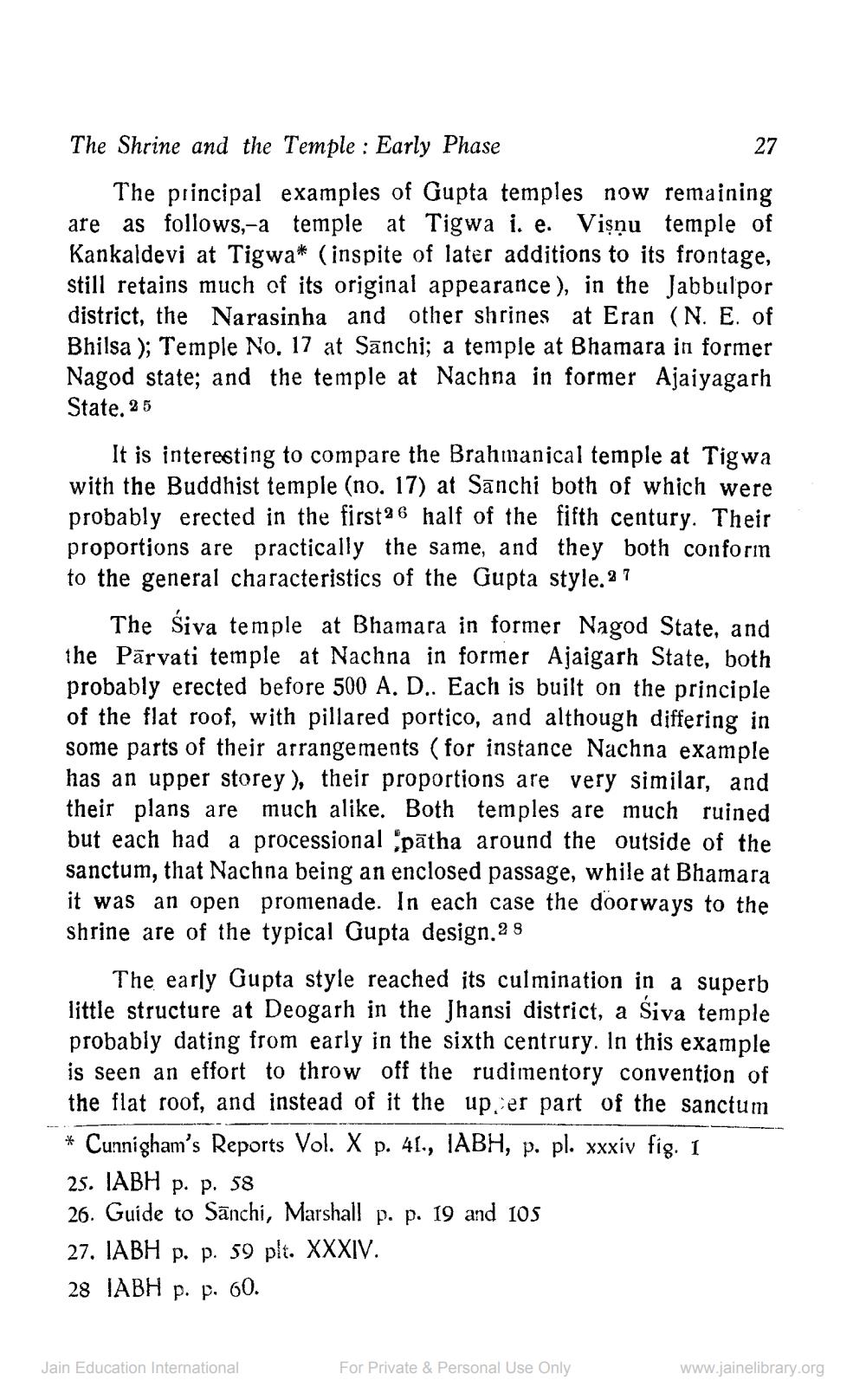________________
27
The Shrine and the Temple : Early Phase
The principal examples of Gupta temples now remaining are as follows,-a temple at Tigwa i. e. Vişņu temple of Kankaldevi at Tigwa* (inspite of later additions to its frontage, still retains much of its original appearance), in the Jabbulpor district, the Narasinha and other shrines at Eran (N. E. of Bhilsa ); Temple No. 17 at Sanchi; a temple at Bhamara in former Nagod state; and the temple at Nachna in former Ajaiyagarh State. 25
It is interesting to compare the Brahmanical temple at Tigwa with the Buddhist temple (no. 17) at Sanchi both of which were probably erected in the first26 half of the fifth century. Their proportions are practically the same, and they both conforin to the general characteristics of the Gupta style.3 ?
The Śiva temple at Bhamara in former Nagod State, and the Pārvati temple at Nachna in former Ajaigarh State, both probably erected before 500 A. D.. Each is built on the principle of the flat roof, with pillared portico, and although differing in some parts of their arrangements (for instance Nachna example has an upper storey), their proportions are very similar, and their plans are much alike. Both temples are much ruined but each had a processional pātha around the outside of the sanctum, that Nachna being an enclosed passage, while at Bhamara it was an open promenade. In each case the doorways to the shrine are of the typical Gupta design.28
The early Gupta style reached its culmination in a superb little structure at Deogarh in the Jhansi district, a Siva temple probably dating from early in the sixth centrury. In this example is seen an effort to throw off the rudimentory convention of the flat roof, and instead of it the uper part of the sanctum * Cunnigham's Reports Vol. X p. 41., IABH, p. pl. xxxiv fig. 1 25. IABH p. p. 58 26. Guide to Sānchi, Marshall p. p. 19 and 105 27. IABH p. p. 59 plt. XXXIV. 28 IABH p. p. 60.
Jain Education International
For Private & Personal Use Only
www.jainelibrary.org




